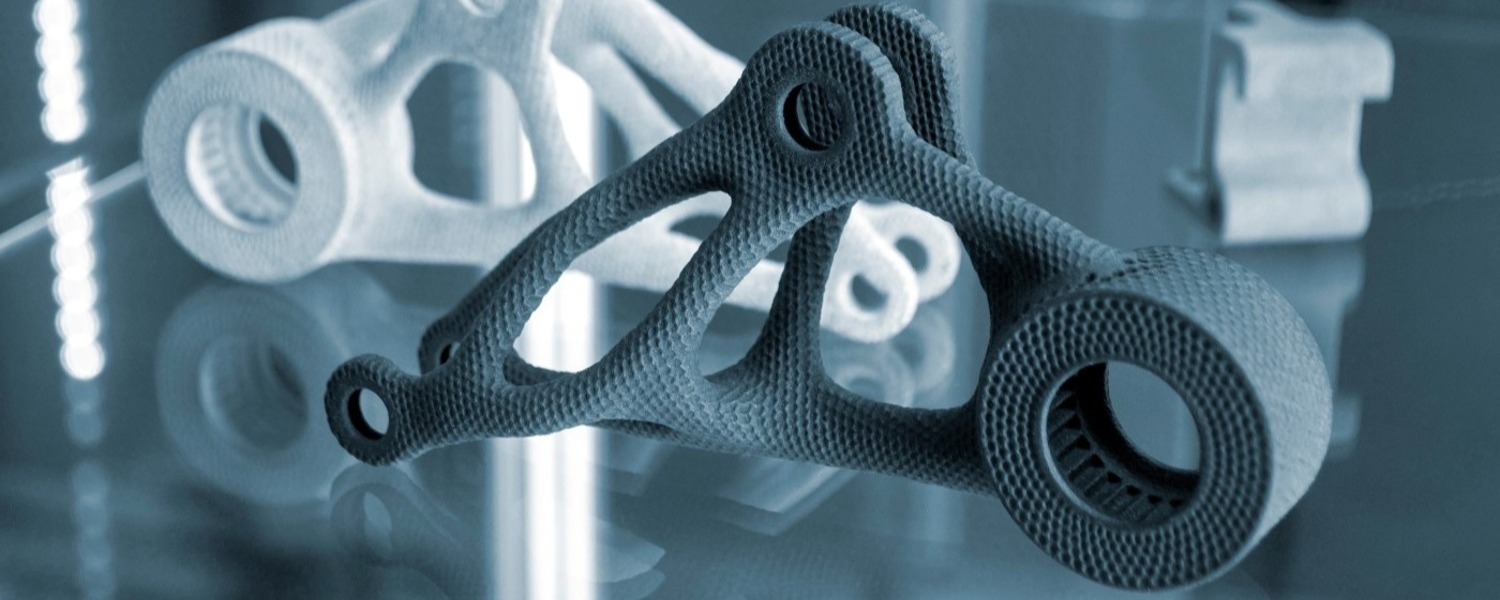As the manufacturing industry continues to accelerate, the introduction and development of new and...
Metal 3D printing is transforming heavy industry, opening up opportunities that would have never been possible without the innovative technologies the additive manufacturing industry has to offer. A sector predicted to grow by 38% between 2021 and 2028, the metal 3D printing market is quickly accelerating — and it shows no signs of slowing down.
This article looks at the history of metal 3D printing, how the industry looks now and what the future holds for additive manufacturing. Keep reading to find out more.
The Rise of 3D Printing
3D printing was discovered around 30 years ago when the technology was limited and the parts produced were very simple. 3D printing offered manufacturers the opportunity to create prototypes quickly and easily, although that’s as far as its abilities stretched initially.
As it was a new and emerging technology, printers were costly and most of the techniques were protected by patents. The main technologies used during the early stages of the industry’s development were FDM, SLA and SLS. FDM parts were stronger and more chemically resistant whereas SLA parts could be created quicker and more accurately.
As time progressed, the evolution of 3D printing technologies, the introduction of new materials and the expiry of patents meant 3D printing became more accessible, resulting in it being more widely adopted. What was once a method only used for prototyping has become an industrialised manufacturing process used for the production of end-use parts.
The Current Metal 3D Printing Market
So, what does the metal 3D printing market look like at present? Valued at $534.18 million USD in 2020, it’s a sector that continues to innovate and grow rapidly. But what have been some of the critical drivers of this success?
Several factors have contributed to the growth and popularity of metal 3D printing. Not only does it offer excellent prototyping capabilities, but 3D printing technologies have also evolved to deliver some of the most reliable and high-quality end-use parts currently available.
A key benefit of metal 3D printing — ultimately leading to its success — is that printers can manufacture complex parts quickly and reliably, executing intricate geometries traditional manufacturing methods could never achieve.
Many metal 3D printing technologies are available, each with its own benefits and applications. Laser powder bed fusion (LPBF) – also referred to as Direct Metal Laser Sintering (DMLS) – is the most popular method of metal 3D printing as it’s highly reliable. It’s also the most mature of the technologies, so is often used as a benchmark to compare other technologies against.
To find out more about each technology, check out our article that looks at four of the main technologies.
Industry Adoption
Metal 3D printing has become increasingly utilised throughout industry due to its ability to create stronger, lighter and more complex parts than those made using traditional manufacturing methods.
The aerospace industry was an early adopter of metal 3D printing, which has largely contributed to propelling the market to its current-day maturity and size. Aerospace alone currently makes up 16% of the 3D printing industry’s revenues.
Metal 3D printing allows aerospace companies — such as Boeing, Airbus and NASA — to quickly and effectively design, print and modify parts, creating the opportunity for increased efficiency, reliability and innovation. The creation of intricate geometries and strong mechanical properties makes 3D printing ideal for producing parts such as nozzles, brackets, turbine engine blades and more.
Another industry that has long harnessed the benefits of metal 3D printing is automotive, largely due to the same requirements and advantages experienced by the aerospace industry.
Rolls Royce has utilised metal 3D printed parts for prototyping and optimising brackets, while Volkswagen used the technology to produce manifolds and radiators, reducing lead times, costs, and improving the productivity and efficiency of production lines.
The Future of Metal 3D printing
So, what does the future of the metal 3D printing market look like? It’s fair to say it’s looking bright — as the market value is expected to reach $4458.76 million USD by 2028.
As more industries realise the capabilities and opportunities presented by metal 3D printing, utilisation will increase and popularity will grow. The possibilities are arguably endless for businesses — cost savings, reduced lead times, increased efficiency, the ability to rapidly optimise designs and spare part inventory reduction.
As metal 3D printing is an additive manufacturing process, rather than subtractive, it’s a much more sustainable route to take as there’s less waste involved. As sustainability becomes increasingly important and climate change requirements and regulatory pressure increase, this may make metal 3D printing the more preferred method of production.
Metal 3D printing never aims to replace traditional manufacturing techniques. Both options have benefits and drawbacks, meaning the ideal outcome will be for the two to work in unison for the best results.
Some experts in the field have discussed their predictions for the future of the metal 3D printing industry;
AM has the power to improve efficiencies by simultaneously producing numerous unique, end-use parts.
Dr. Jeffrey Graves, President & CEO, 3D Systems
We don’t need a crystal ball to know that the future of 3D printing is bright… The shift toward supply chain agility, speed and reliability will be the cornerstones of a decentralised manufacturing revolution.
Stephan Kühr, Founder and CEO, 3YOURMIND
As innovations and developments continue and technologies mature and advance, the opportunities metal 3D printing creates for heavy industry keep growing and growing.
Explore How Metal 3D Printing Could Work for You
Want to learn more about how metal 3D printing works and what it could do for your business? Then you’ve come to the right place.
Our guide will take you through the process, the lead times, the applications and the benefits to explore the technologies and find out how they could work for you. Simply click the link below to get started.


